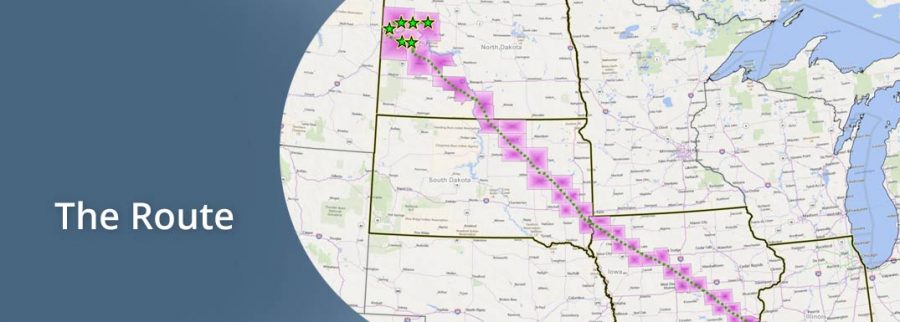Oil vs Water: The North Dakota Access Pipeline
December 7, 2016
On Sunday, December 2nd, the Army Corps of Engineers said it would look for alternate routes— a huge victory for the protesters, especially the Sioux Tribe.
However, the story behind the the North Dakota Access Pipeline is complex, as the protesters—and recently, veterans— did not find it simple or easy to protect the water and sacred sites of the Sioux people.
Connecting Pakota, Illinois and Bakken and Three Forks production areas in North Dakota, the Dakota Access Pipeline’s approximately 1,172-mile path aims to streamline crude oil transportation across the country.
However, it does so at the cost of both Native American rights and environmental safety.
There are possible short-term benefits that are important to note, as they motivate this project. According to Energy Transfer, who is a leader in this project, this investment of around $3.7 billion will create local jobs, possibly 8,000- 12,000. Additionally, this construction project will increase taxes and revenue, a combined estimate of around $200 million. More benefits are discussed at http://www.daplpipelinefacts.com/.
Although this pipeline will initially generate income because it facilitates energy transportation at a relatively low investment of an estimated $3.7 billion, are we willing to trade sacred aspects of Native American culture and risk the safety of people and the environment for this financial stimulus?
Many people, including the 117 protesters that were arrested, are not. People have protested since the beginning of April, prominently the Native American tribe, the Standing Rock Sioux, who wish to preserve their sacred burial grounds. According to NPR’s Rebecca Hersher, in October, “the Standing Rock Sioux lost a bid in federal court to halt construction, paving the way for work on the $3.8 billion pipeline to continue. Almost immediately afterward, three U.S. agencies “announced a halt to work in one area significant to the tribe.”
Unfortunately, the tension between protesters and the police boiled over, as observed by the New York Times’ Sue Skalicky and Monica Davey: “[the police] acknowledged using pepper spray and beanbag rounds against the protesters, as well as a high-pitched sound device meant to disperse crowds.” However, as The Huffington Post’s Michael McLaughlin reports, the protesters have not been entirely peaceful, as incidents have been reported of four different individuals opening fire at police. It does call into question the fairness of arresting the other 113 peaceful protesters.
On November 20th, the police used water cannons to attack the protesters. Because of the freezing temperatures, “at least 17 protesters were taken to the hospital — including some who were treated for hypothermia,”Derek Hawkins of the Washington Post reports.
In addition to the encroachment on culture, another issue to consider is the risk to environment, specifically the region’s water supply. Environmentalists have shown their disapproval for the Dakota Access Pipeline due to these risks of tainting the water supply. Because of the pipeline’s extended length, any water contamination would affect many of thousands of people. If people are poisoned by their contaminated water supply, the resulting health care costs can mitigate any possible profits that this improved route for crude oil might generate. The argument for cashing in on crude oil is weakened further because it is a limited, nonrenewable energy source that we are trying to move away from. Sacrificing the health of the environment and the people who live there just to harvest the last of a limited energy source seems to falter as a stable argument.
Protesters that cannot physically protest at Standing Rock are uniting under the Twitter hashtag, #NoDAPL. Another online protesting community is https://nodaplsolidarity.org. These two showcase the power of social media and the internet as a platform for activists and social change. In fact, through the internet, people far away (like us) can help out if they wish and contribute to the movement to defend the rights of Native Americans.
Nazareth Junior Briza Romero reacts to the Dakota Access Pipeline’s effect on the Native Americans and water with a precise comment, “That’s rude. C’mon.”
Ultimately, the decision reflects what we as a nation value first—people or money, water or oil. Will the money be pleasing enough to justify the destruction of an already marginalized minority’s culture; will it be enough to cover increased healthcare costs that will happen if the water supply is tainted? H2O keeps us all alive, but can you drink oil?

